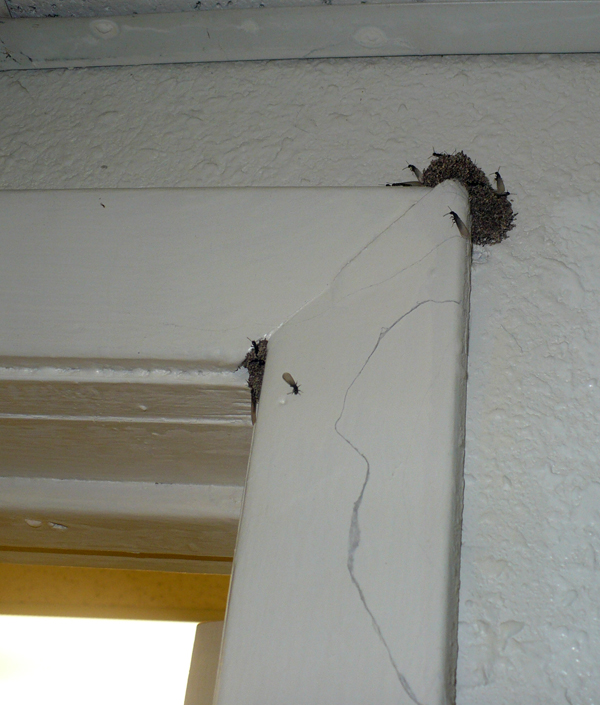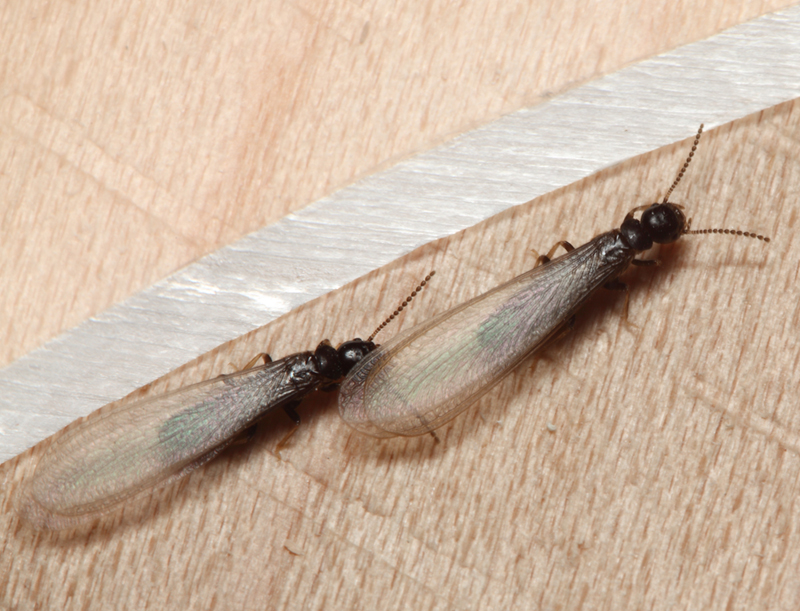If you own a home in Texas you’re concerned about termites–or at least you should be. Termites are likely to be the most expensive insect pest you will ever get in your home. I was reminded of this fact this weekend cleaning out my mosquito filled water fountain at my home in Plano. There I saw several termite “swarmers” floating on the surface–my first termite sighting of the year. I’m not too worried about my home–it has been treated in the past. And termites are naturally just about everywhere outdoors in our part of the country. But the sighting told me that swarming season is in progress, and that the phones in termite control companies are starting to ring again. Warm weather and rain, like we saw last weekend (and is predicted for the coming weekend), provides the perfect trigger for springtime termite swarms.
So what are the signs of a termite problem in the home? The most common sign that your home might have a problem is the sudden appearance of anywhere from a few to hundreds of small, black winged insects. These are termite swarmers, the reproductive caste of the termite colony. Once a year, swarmers leave the underground nest to fly and find mates–preferably mates from a different colony. When swarmers show up indoors it’s almost a sure thing that worker termites are active somewhere in the house.

In this building, termites are emerging from their mud swarm tubes. Photo taken this week by Cecil Fueston, McKinney ISD.
Termite swarmers don’t fly as much as they crawl about indoors, and they may lose their wings quickly; but once you’ve seen them they are pretty easy to recognize. They are small (about a quarter of an inch-long), with a black-brown body with wings that extend beyond the tail. They are sometimes confused with ants, but lack the ant-ish pinched “waist”.
The other sign to look for inside your home is dirt in odd locations, like in a window frame, doorjamb or on a sheet rock wall. Prior to swarming in a home, termites often build a small mud swarm tube at the point in the wall from which they will emerge. The tubes may be small (less than an inch across), or relatively large (up to a foot long), but they usually have a similar consistency and look of a mud dauber wasp nest. Remember, you will not likely see the small white worker termites in your home, unless you break open a wall, or one of these swarmer tubes. Worker termites don’t willingly expose themselves to light, or dry air, and usually stay well hidden inside walls or underground.
If you find termite swarmers or suspicious mud tubes on the walls of your home, call a termite professional. A professional will confirm whether you have a termite infestation, and will quote you how much it will cost to solve it.
The good news about termites, if there is one, is that today’s treatment options are very effective. Non-repellent termiticides (insecticides designed for termite control), and outdoor and indoor bait stations are both effective and pose low-risk to your household and the environment. For more information about termites and termite control, see the Insects in the City termite page. And don’t ignore the telltale signs of termites.
